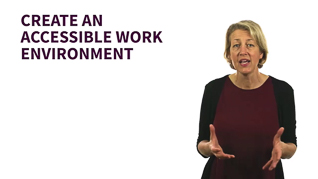
Meeting the needs of every single employee in your organization is extremely important. But, this takes a certain level of understanding about your staff members to accomplish. On top of this, every person is unique, meaning they require different physical and emotional necessities to successfully manage their tasks.

To fully recognize your employees’ needs, you must become familiar with neuroinclusive practices. Need a refresher on what neurodiversity is and how to incorporate neuroinclusion in the workplace? Continue reading.
Neuroinclusion: Its Definition and Importance
Neurodiversity is a word that describes the natural variation in the human brain that impacts the various ways people think, process and experience the world around them. In relation to this, neuroinclusion is the act of integrating and welcoming neurodivergent people into the workplace and discovering how to help them have a positive work experience, even though they think through things differently.
A neurodivergent employee may have learning differences, sensitivity to stimulation caused by light, touch or smell, social differences and special interests. These invisible disabilities can often go unnoticed and ignored by employers, leaving employees to overcome the difficult work environment alone. This can make your employees feel lonely, unable to ask for help or adjust their workplace to be more beneficial to them.
It’s important to make appropriate accommodations for people whose disabilities aren’t visible, including hidden physical impairments, neurological differences and mental illnesses, because they may need support or certain requirements to ensure they can be as productive and healthy as possible.
A neurodiverse team can be a powerhouse for innovation and efficiency. While the main benefit of a fully inclusive space is that every person feels inherently valuable and important, optimizing your office for neuroinclusion can help neurodiverse individuals operate at a much higher capacity than they currently are.
Like any job, tasks are more easily accomplished when people have the tools they need to succeed. The same goes for people that uniquely process things. By giving neurodivergent staff a space to work that’s not distracting and adapting the office to fit their personal requirements, you can assist with their ability to do great work.

Benefits of a Neurodiverse Workforce
Unfortunately, many neurodivergent employees may feel like they don’t have anything special to bring to the table — but that’s definitely not the case. Because a worker with neurological conditions looks at things in unique ways, they bring a specific talent and understanding that others can not:
- Innovation and creativity.
- Technical problem-solving.
- Concentration and persistence.
- Accuracy and the ability to detect errors.
- Detailed, factual information.
- Reliable work ethic.
Meeting Your Employees’ Needs
An employer doesn’t have to give their business a complete makeover to be a better fit for their workforce. They can make small adjustments to make a significant difference. And, if you feel this won’t impact that many employees, think again. According to the National Library of Medicine, 15 to 20% of the population identifies as neurodiverse. That’s a large percentage of people, many of which are working in conditions that make it harder for them to do their jobs well.
Here are some practical ways to accommodate your neurodiverse workforce:
Sensory Considerations
Because light, sounds and other sensory elements can be a major distraction for neurodiverse employees, provide a sensory-friendly workspace that reduces noise and bright lighting. Whether you have a specific conference room, office or secluded part of the office, make the space comfortable without making the workers using this area feel left out or cast out of the group. Noise-canceling headphones and soft, alternative light fixtures can be helpful in these work areas for an individual with a neurodivergent condition.
Communicate Clearly
To ensure every employee receives the same level of communication and instruction, employers should always transfer information clearly and directly. This will help avoid miscommunication and a lack of understanding. Use as much detail as possible, always give guidelines and use the person’s name so they know the details are intended for them. This includes both in-person meetings as well as email or direct message conversations.
Set a Specific Focus Time
When people struggle to get work done in high-traffic, louder areas, it can be really helpful to encourage a specific time period every day for the office to be quieter and for every team member to stay in their own areas and accomplish tasks. As an employer, you shouldn’t be breathing down people’s necks to ensure they follow this, but it can help neurodiverse people feel seen and cared for.
Educate Your Employees
Not everyone in your company may know or understand neuroinclusion and why they need to learn about it. This type of setting can immensely impact those with neurological conditions by not making a further understanding of their needs a priority.
You would never fail to speak about key topics like sexual harassment or physical disabilities in the workplace, but making neuroinclusion a main learning objective is just as important. Providing proper training to your managers and colleagues can ensure that every coworker is treated fairly and with respect.
A Modern Solution: Neurodiversity in the Workplace Training
Neurodiversity is not often considered in training, but it’s vital for the health and betterment of every team member in your organization. It’s also difficult to teach up-to-date information using outdated training materials. With topics constantly changing or being updated, it’s almost impossible for older resources to fully capture a specific topic and deliver the right amount and type of knowledge.
Increase your team’s understanding of neurodiversity and help your neurodiverse employees perform to the best of their ability by providing clear, insightful and interactive neurodiversity training videos from Video Training Power. Our company is constantly monitoring changes and new information that’s vital for workplaces to learn so businesses always have the latest insights on any topics.
Our library of resources are available on-demand, and perfect for full group, classroom-style training. Want to better instruct your employees with mental health and neurodiversity awareness training? Get started with Video Training Power today.